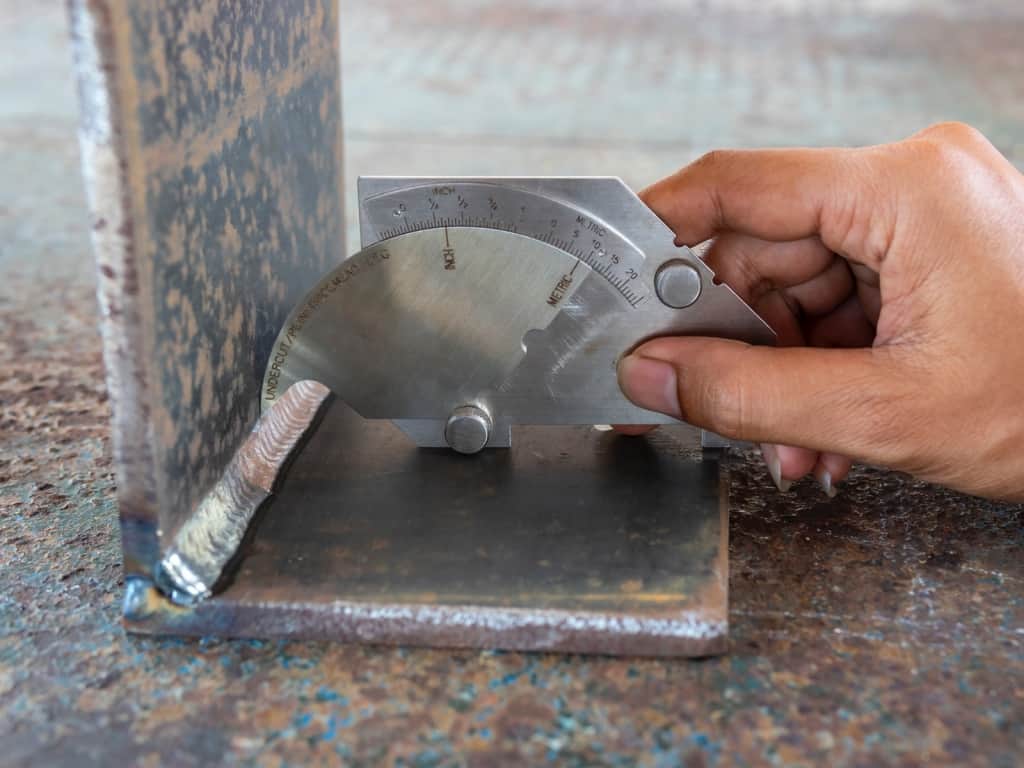Preventing Weld Undercut Made Easy: Trick Techniques Revealed
Preventing Weld Undercut Made Easy: Trick Techniques Revealed
Blog Article
Grasping the Art of Welding: Just How to Avoid Undercut Welding Issues for Flawless Construction Results
Performance and accuracy are vital worldwide of welding, where also the tiniest flaw can jeopardize the architectural stability of a produced piece. One usual challenge that welders face is damaging, a problem that can lead and compromise a weld joint to pricey rework. By comprehending the origin of undercut welding and applying efficient strategies to avoid it, welders can elevate their craft to new levels of quality (Preventing weld undercut). In the search of perfect manufacture results, grasping the art of welding to stay clear of undercut concerns is not just a skill but a requirement for those pursuing perfection in their job.
Recognizing Undercut Welding

To avoid undercut welding, welders must ensure correct welding criteria, such as readjusting the current, voltage, travel speed, and preserving the proper electrode angle. By comprehending the causes of undercut welding and carrying out preventive actions, welders can accomplish top quality, structurally sound welds.
Reasons For Undercut in Welding
Recognizing the factors that add to damage in welding is essential for welders to produce top notch, structurally audio welds. Undercutting occurs when the weld metal does not effectively load the groove developed between the base metal and the formerly transferred weld steel. Numerous variables can cause damage in welding. One usual reason is excessive heat input. Welding at high temperature levels for extensive durations can result in the base steel thawing even more than wanted, resulting in undercut. Inadequate welding inaccurate or current welding speed can likewise add to damage. Insufficient current might not offer sufficient warm to melt the base and filler metals sufficiently, while extreme rate can prevent correct fusion, creating undercut. Furthermore, inappropriate electrode angles or incorrect lantern adjustment strategies can develop areas of reduced weld steel deposition, promoting undercut. Understanding these reasons and implementing appropriate welding strategies can aid prevent undercutting concerns, making certain resilient and solid welds.
Methods to Protect Against Undercutting

To minimize the threat of damaging in welding, welders can utilize tactical welding methods intended at enhancing the high quality and integrity of the weld joints. Furthermore, utilizing the right welding strategy for the certain joint arrangement, such as weave or stringer beads, can add to decreasing undercutting.
Using back-step welding methods and managing the weld bead account can additionally aid distribute warm uniformly and lessen the danger of undercut. Normal examination of the weld joint during and after welding, as well as carrying out high quality guarantee actions, can assist in dealing with and finding damaging issues quickly.
Relevance of Proper Welding Parameters
Picking and maintaining proper welding criteria is crucial for attaining successful welds with marginal flaws. Welding specifications describe variables such as voltage, existing, travel rate, electrode angle, and shielding gas circulation price that directly impact the welding process. These specifications should be meticulously changed based upon the sort of product being bonded, its thickness, and the welding method utilized.
Appropriate welding criteria ensure the ideal amount of warm is related to thaw the base metals and filler product uniformly. If the specifications are established expensive, it can cause excessive heat input, creating spatter, distortion, or burn-through. On the other hand, if the criteria are also low, insufficient fusion, lack of penetration, or undercutting might happen.
Top Quality Guarantee in Welding Operations

Conclusion
Finally, understanding the art of welding calls for a comprehensive understanding of undercut welding, its causes, and techniques to stop it. By ensuring appropriate welding parameters and executing quality control methods, perfect fabrication outcomes can be achieved. It is important for welders to constantly strive for quality in their welding operations to stay clear of undercut issues and find more produce premium welds.
Undercut welding, a common problem in welding procedures, occurs when the weld metal doesn't properly load the groove and leaves a groove or clinical depression along the bonded joint.To avoid undercut welding, welders must ensure correct welding parameters, such as readjusting the current, voltage, travel rate, and keeping the correct electrode angle. Poor welding present or inaccurate welding rate can also contribute to damage.To reduce the risk of damaging in welding, welders can utilize strategic welding methods intended at improving the top quality and integrity of the weld joints.In conclusion, mastering the art of welding requires a thorough understanding of undercut welding, its reasons, and techniques to avoid it.
Report this page